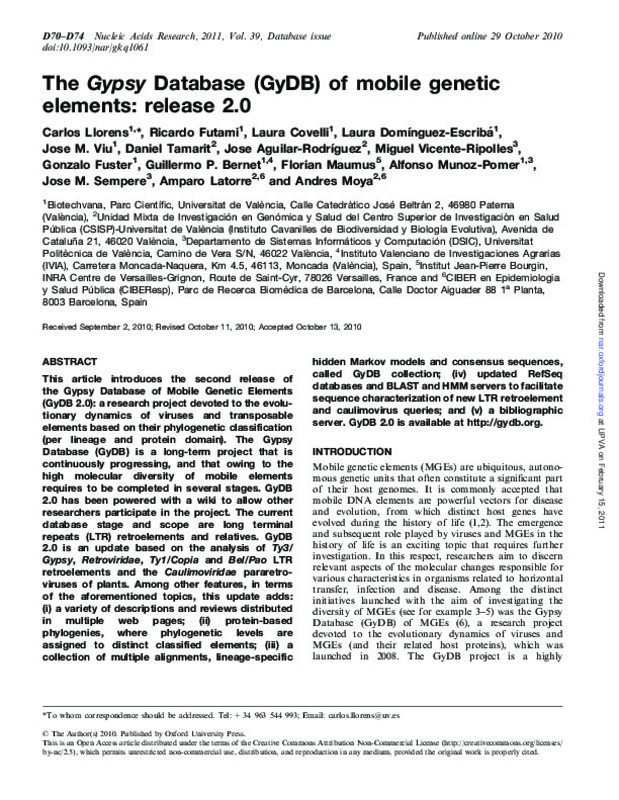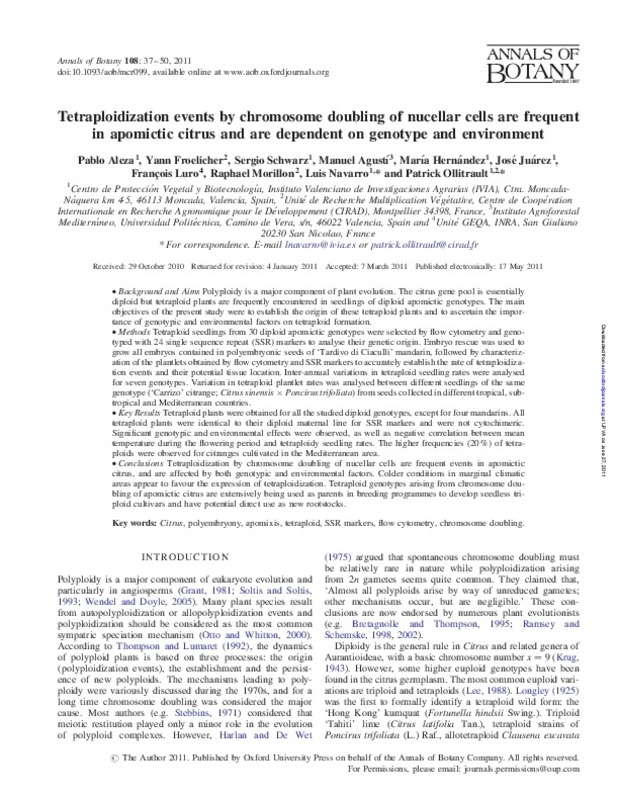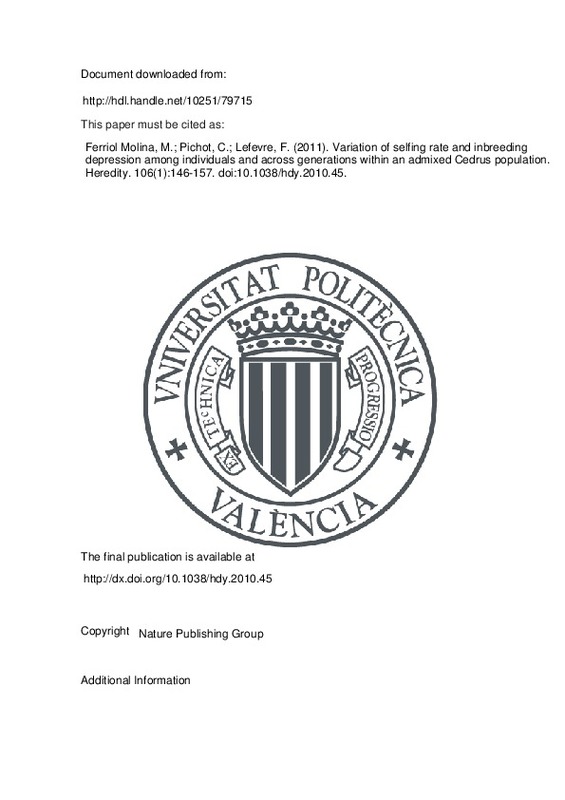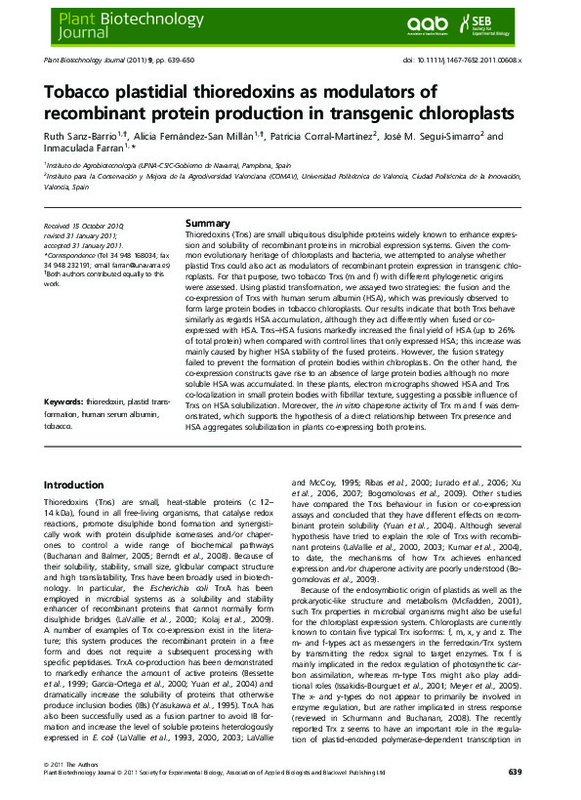Hurst, G. D. D., & Schilthuizen, M. (1998). Selfish genetic elements and speciation. Heredity, 80(1), 2-8. doi:10.1046/j.1365-2540.1998.00337.x
Volff, J.-N., & Brosius, J. (2007). Modern Genomes with Retro-Look: Retrotransposed Elements, Retroposition and the Origin of New Genes. Gene and Protein Evolution, 175-190. doi:10.1159/000107611
Jurka, J., Kapitonov, V. V., Pavlicek, A., Klonowski, P., Kohany, O., & Walichiewicz, J. (2005). Repbase Update, a database of eukaryotic repetitive elements. Cytogenetic and Genome Research, 110(1-4), 462-467. doi:10.1159/000084979
[+]
Hurst, G. D. D., & Schilthuizen, M. (1998). Selfish genetic elements and speciation. Heredity, 80(1), 2-8. doi:10.1046/j.1365-2540.1998.00337.x
Volff, J.-N., & Brosius, J. (2007). Modern Genomes with Retro-Look: Retrotransposed Elements, Retroposition and the Origin of New Genes. Gene and Protein Evolution, 175-190. doi:10.1159/000107611
Jurka, J., Kapitonov, V. V., Pavlicek, A., Klonowski, P., Kohany, O., & Walichiewicz, J. (2005). Repbase Update, a database of eukaryotic repetitive elements. Cytogenetic and Genome Research, 110(1-4), 462-467. doi:10.1159/000084979
Leplae, R. (2004). ACLAME: A CLAssification of Mobile genetic Elements. Nucleic Acids Research, 32(90001), 45D-49. doi:10.1093/nar/gkh084
Gründemann, J., Schlaudraff, F., Haeckel, O., & Liss, B. (2008). Elevated α-synuclein mRNA levels in individual UV-laser-microdissected dopaminergic substantia nigra neurons in idiopathic Parkinson’s disease. Nucleic Acids Research, 36(7), e38. doi:10.1093/nar/gkn084
Llorens, C., Muñoz-Pomer, A., Bernad, L., Botella, H., & Moya, A. (2009). Network dynamics of eukaryotic LTR retroelements beyond phylogenetic trees. Biology Direct, 4(1), 41. doi:10.1186/1745-6150-4-41
Benson, D. A., Karsch-Mizrachi, I., Lipman, D. J., Ostell, J., & Sayers, E. W. (2009). GenBank. Nucleic Acids Research, 37(Database), D26-D31. doi:10.1093/nar/gkn723
Llorens, C., Fares, M. A., & Moya, A. (2008). Relationships of Gag-pol Diversity between Ty3/Gypsy and Retroviridae LTR retroelements and the three kings hypothesis. BMC Evolutionary Biology, 8(1), 276. doi:10.1186/1471-2148-8-276
Eddy, S. R. (1998). Profile hidden Markov models. Bioinformatics, 14(9), 755-763. doi:10.1093/bioinformatics/14.9.755
Koonin, E. V., Zhou, S., & Lucchesi, J. C. (1995). The chromo superfamily: new members, duplication of the chromo domain and possible role in delivering transcription regulators to chromatin. Nucleic Acids Research, 23(21), 4229-4233. doi:10.1093/nar/23.21.4229
Rawlings, N. D., Barrett, A. J., & Bateman, A. (2009). MEROPS: the peptidase database. Nucleic Acids Research, 38(suppl_1), D227-D233. doi:10.1093/nar/gkp971
Llorens, C., Futami, R., Renaud, G., & Moya, A. (2009). Bioinformatic flowchart and database to investigate the origins and diversity of Clan AA peptidases. Biology Direct, 4(1), 3. doi:10.1186/1745-6150-4-3
Altschul, S. (1997). Gapped BLAST and PSI-BLAST: a new generation of protein database search programs. Nucleic Acids Research, 25(17), 3389-3402. doi:10.1093/nar/25.17.3389
Novikova, O., Mayorov, V., Smyshlyaev, G., Fursov, M., Adkison, L., Pisarenko, O., & Blinov, A. (2008). Novel clades of chromodomain-containing Gypsy LTR retrotransposons from mosses (Bryophyta). The Plant Journal, 56(4), 562-574. doi:10.1111/j.1365-313x.2008.03621.x
Bae, Y.-A., Ahn, J.-S., Kim, S.-H., Rhyu, M.-G., Kong, Y., & Cho, S.-Y. (2008). PwRn1, a novel Ty3/gypsy-like retrotransposon of Paragonimus westermani: molecular characters and its differentially preserved mobile potential according to host chromosomal polyploidy. BMC Genomics, 9(1), 482. doi:10.1186/1471-2164-9-482
Gao, D., Gill, N., Kim, H.-R., Walling, J. G., Zhang, W., Fan, C., … Jackson, S. A. (2009). A lineage-specific centromere retrotransposon in Oryza brachyantha. The Plant Journal, 60(5), 820-831. doi:10.1111/j.1365-313x.2009.04005.x
Gottlieb, A. M., & Poggio, L. (2010). Genomic screening in dioecious «yerba mate» tree (Ilex paraguariensis A. St. Hill., Aquifoliaceae) through representational difference analysis. Genetica, 138(6), 567-578. doi:10.1007/s10709-010-9449-9
Maumus, F., Allen, A. E., Mhiri, C., Hu, H., Jabbari, K., Vardi, A., … Bowler, C. (2009). Potential impact of stress activated retrotransposons on genome evolution in a marine diatom. BMC Genomics, 10(1), 624. doi:10.1186/1471-2164-10-624
(2010). Genome Sequence of the Pea Aphid Acyrthosiphon pisum. PLoS Biology, 8(2), e1000313. doi:10.1371/journal.pbio.1000313
Lerat, E., Brunet, F., Bazin, C., & Capy, P. (1999). Genetica, 107(1/3), 15-25. doi:10.1023/a:1004026821539
T., G., & R., P. (2002). A group of deuterostome Ty3/ gypsy -like retrotransposons with Ty1/ copia -like pol -domain orders. Molecular Genetics and Genomics, 267(4), 481-491. doi:10.1007/s00438-002-0679-0
Malik, H. S. (2001). Phylogenetic Analysis of Ribonuclease H Domains Suggests a Late, Chimeric Origin of LTR Retrotransposable Elements and Retroviruses. Genome Research, 11(7), 1187-1197. doi:10.1101/gr.185101
Marco, A., & Marín, I. (2008). How Athila retrotransposons survive in the Arabidopsis genome. BMC Genomics, 9(1), 219. doi:10.1186/1471-2164-9-219
Rambaut, A., Posada, D., Crandall, K. A., & Holmes, E. C. (2004). The causes and consequences of HIV evolution. Nature Reviews Genetics, 5(1), 52-61. doi:10.1038/nrg1246
Flavell, A. J. (1999). Long terminal repeat retrotransposons jump between species. Proceedings of the National Academy of Sciences, 96(22), 12211-12212. doi:10.1073/pnas.96.22.12211
Jordan, I. K., Matyunina, L. V., & McDonald, J. F. (1999). Evidence for the recent horizontal transfer of long terminal repeat retrotransposon. Proceedings of the National Academy of Sciences, 96(22), 12621-12625. doi:10.1073/pnas.96.22.12621
Bousalem, M., Douzery, E. J. P., & Seal, S. E. (2008). Taxonomy, molecular phylogeny and evolution of plant reverse transcribing viruses (family Caulimoviridae) inferred from full-length genome and reverse transcriptase sequences. Archives of Virology, 153(6), 1085-1102. doi:10.1007/s00705-008-0095-9
Koonin, E. V., Mushegian, A. R., Ryabov, E. V., & Dolja, V. V. (1991). Diverse Groups of Plant RNA and DNA Viruses Share Related Movement Proteins that may Possess Chaperone-like Activity. Journal of General Virology, 72(12), 2895-2903. doi:10.1099/0022-1317-72-12-2895
Llorens, J. V., Clark, J. B., Martínez-Garay, I., Soriano, S., de Frutos, R., & Martínez-Sebastián, M. J. (2008). Gypsy endogenous retrovirus maintains potential infectivity in several species of Drosophilids. BMC Evolutionary Biology, 8(1), 302. doi:10.1186/1471-2148-8-302
De Setta, N., Van Sluys, M.-A., Capy, P., & Carareto, C. M. (2009). Multiple invasions of Gypsy and Micropia retroelements in genus Zaprionus and melanogaster subgroup of the genus Drosophila. BMC Evolutionary Biology, 9(1), 279. doi:10.1186/1471-2148-9-279
[-]












